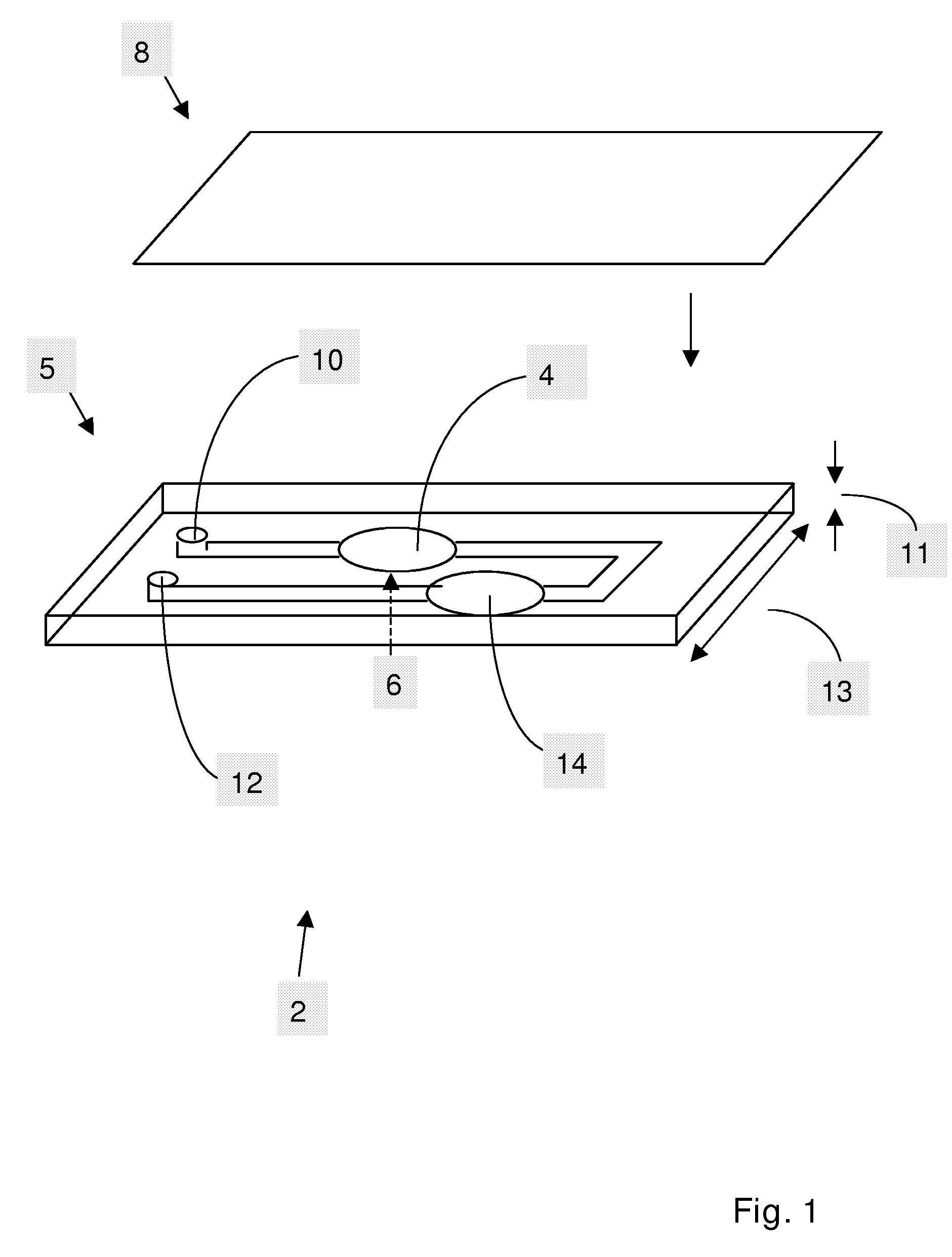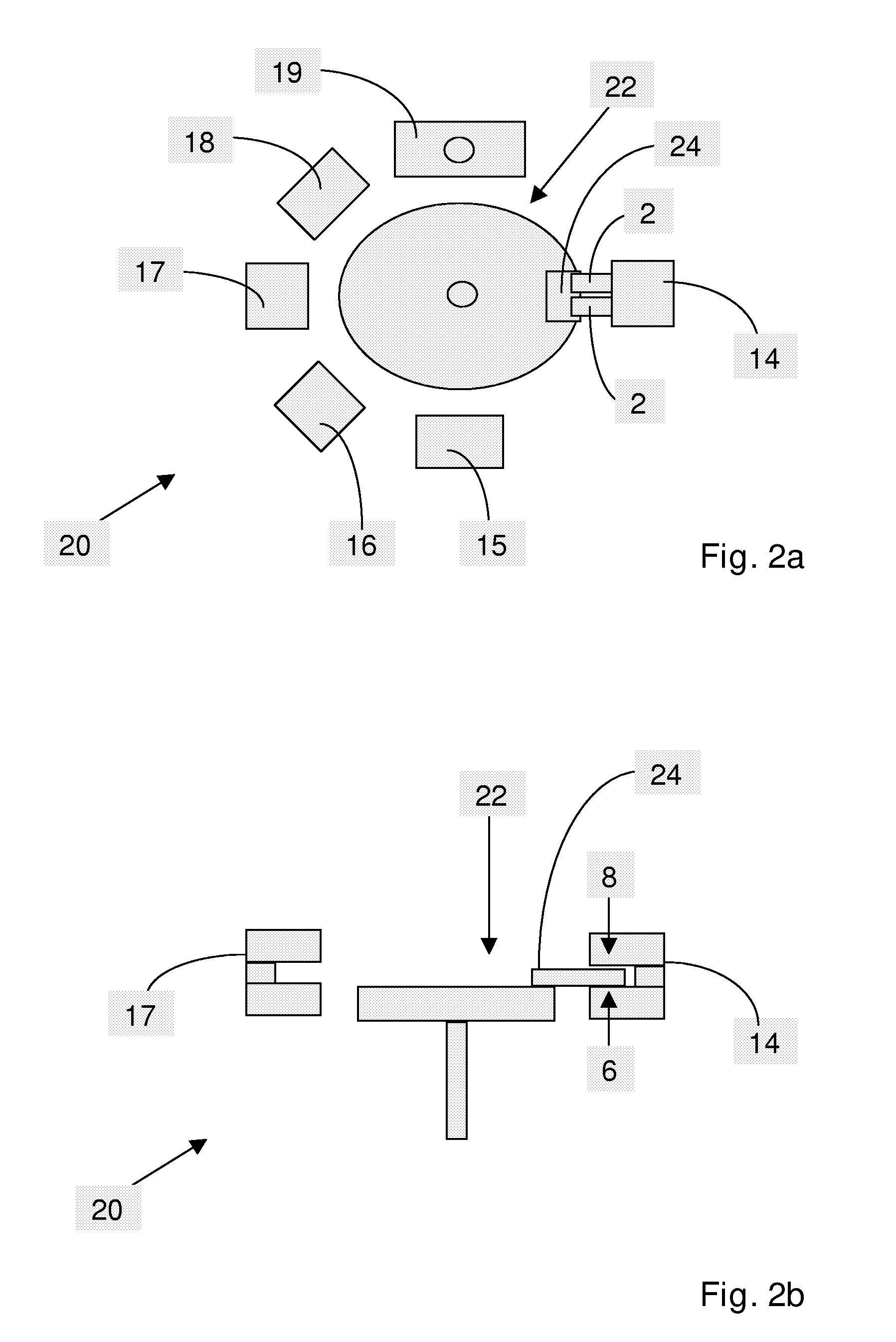Temperature Control of Reaction Vessel, System with Reaction Vessel, Software Product for System and Use of System
a technology of reaction vessel and temperature control, which is applied in the direction of lighting and heating apparatus, laboratory glassware, instruments, etc., can solve the problems of limiting the speed of reaction, requiring a significant amount of time for the temperature change of the block, and the reaction itself occurring very fas
- Summary
- Abstract
- Description
- Claims
- Application Information
AI Technical Summary
Benefits of technology
Problems solved by technology
Method used
Image
Examples
example 1
Effect of Using Heat Blocks Hotter and Cooler than the Target Temperatures on The Rate of Temperature Increase and Decrease in the Reaction Vessel of the System
[0048]To optimize the speed of thermal cycling, a system according to the present invention was constructed that comprises several heat blocks maintained at predetermined temperatures. The blocks were maintained at 29° C. (the cold block); 61° C.; 97° C. and 115° C. A temperature sensor was placed inside a flat reaction vessel and the heating and cooling rates of the contents of the vessel were determined using two different methods of thermal cycling. In the first method, the reaction vessel was transferred from the block at 61° C. directly to the block at 97° C. and from the block at 97° C. directly back to the block at 61° C. The second method was performed according to the present invention so that to heat the contents of the reaction vessel from 61° C. to 97° C., the vessel was transferred from the block at 61° C. to the...
example 2
Effect of Using Aluminium Foil as a Material in the Reaction Vessel of the System on the Rate of Temperature Change Inside the Vessel
[0049]To determine the effect of using a metal foil instead of a plastic wall on one side of the reaction vessel, two identical polypropene vessel halves were laminated with either aluminium foil or a plastic foil. A temperature sensor was placed inside each vessel and the rates of temperature change were determined for both vessels using a system according to the present invention. This was done by changing the position of the vessel from a thermal block set at 105° C. to a block set at 27° C. for cooling or vice versa for heating. Separate temperature measurement data were recorded for cooling and heating the contents of the vessels. The data were fitted to a single exponential function and the half-lives of temperature change, i.e. the times required for the temperature inside the vessel to change to the half-point between 105° C. and 27° C., were d...
example 3
Use of the Method and System According to the Present Invention to Perform Real-Time Polymerase Chain Reaction
[0062]To demonstrate the applicability of the present invention to performing real-time polymerase chain reaction, a PCR assay was set up for bacteriophage T4. The assay chemistry was as described by Nurmi et al. (2002). The sequences of the oligonucleotides used in the assay were as follows: 5′ primer ATGTTCCACGCT-AAAAGACCTTATTGAAAA (SEQ ID NO: 1); 3′ primer CAGCAGAATGMCCG-MTCCACAAATAT (SEQ ID NO: 2); europium labelled probe ATTATTCATCAC-CGAGCGACTATTCMGATA (SEQ ID NO: 3) and QSY-7 labelled quencher probe GCTCGGTGATGAATMT (SEQ ID NO: 4). 30 μl amplification reactions consisted of 1× HotMaster Taq buffer (Eppendorf, Germany), 0.3 μM primers, 28 nM europium probe, 280 nM quencher probe, 2.5 mM magnesium chloride, 0.2 mM dNTPs and 1.25 U HotMaster Taq polymerase. The amplification reactions were carried out using the kind of a reaction vessel described in FIG. 1. For thermal cy...
PUM
| Property | Measurement | Unit |
|---|---|---|
| Power | aaaaa | aaaaa |
| Power | aaaaa | aaaaa |
| Volume | aaaaa | aaaaa |
Abstract
Description
Claims
Application Information
 Login to View More
Login to View More - R&D
- Intellectual Property
- Life Sciences
- Materials
- Tech Scout
- Unparalleled Data Quality
- Higher Quality Content
- 60% Fewer Hallucinations
Browse by: Latest US Patents, China's latest patents, Technical Efficacy Thesaurus, Application Domain, Technology Topic, Popular Technical Reports.
© 2025 PatSnap. All rights reserved.Legal|Privacy policy|Modern Slavery Act Transparency Statement|Sitemap|About US| Contact US: help@patsnap.com



